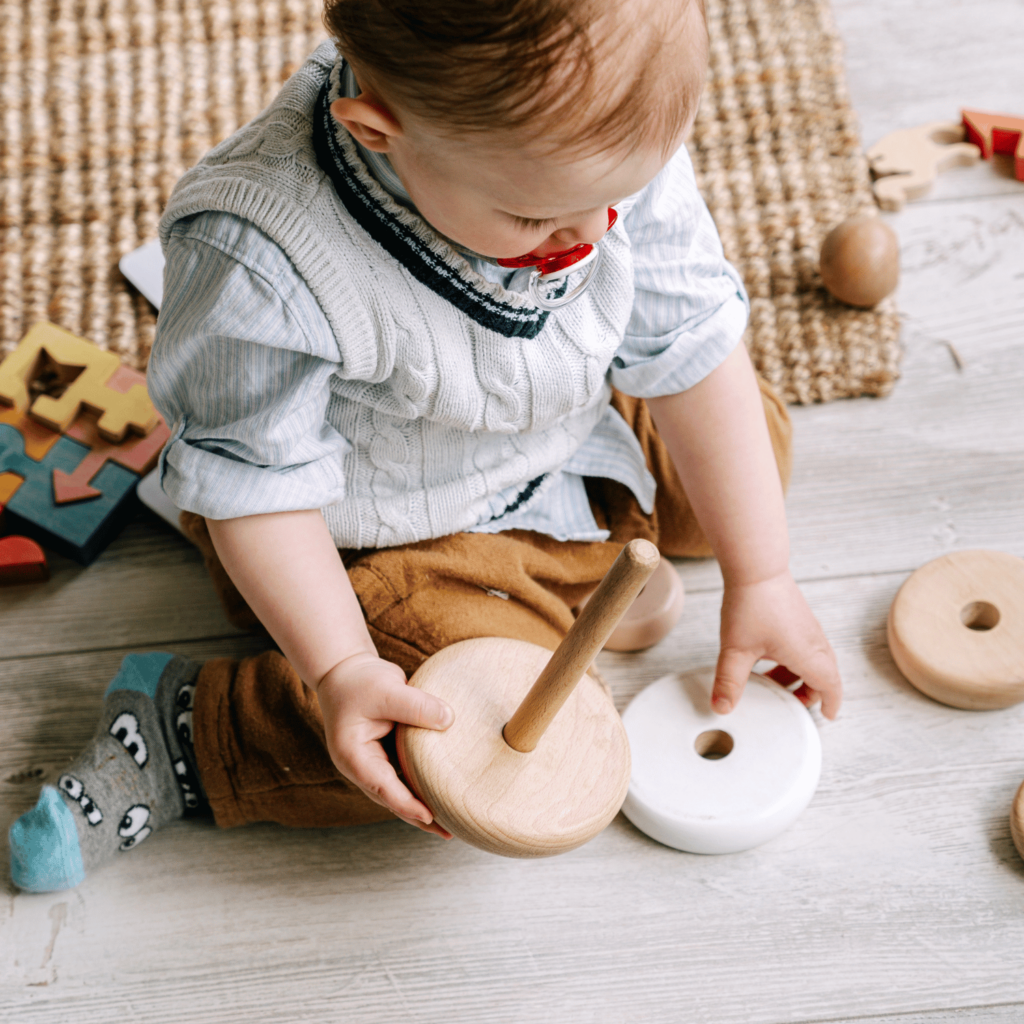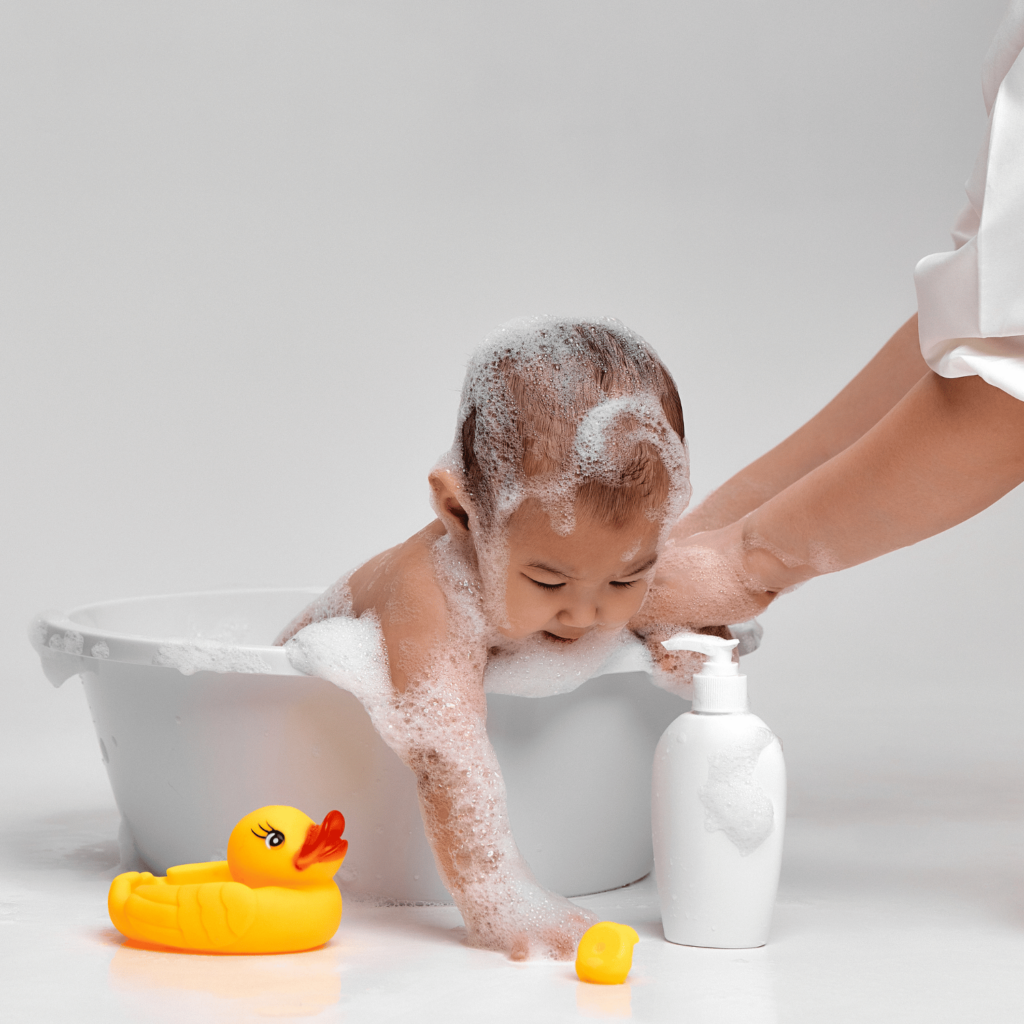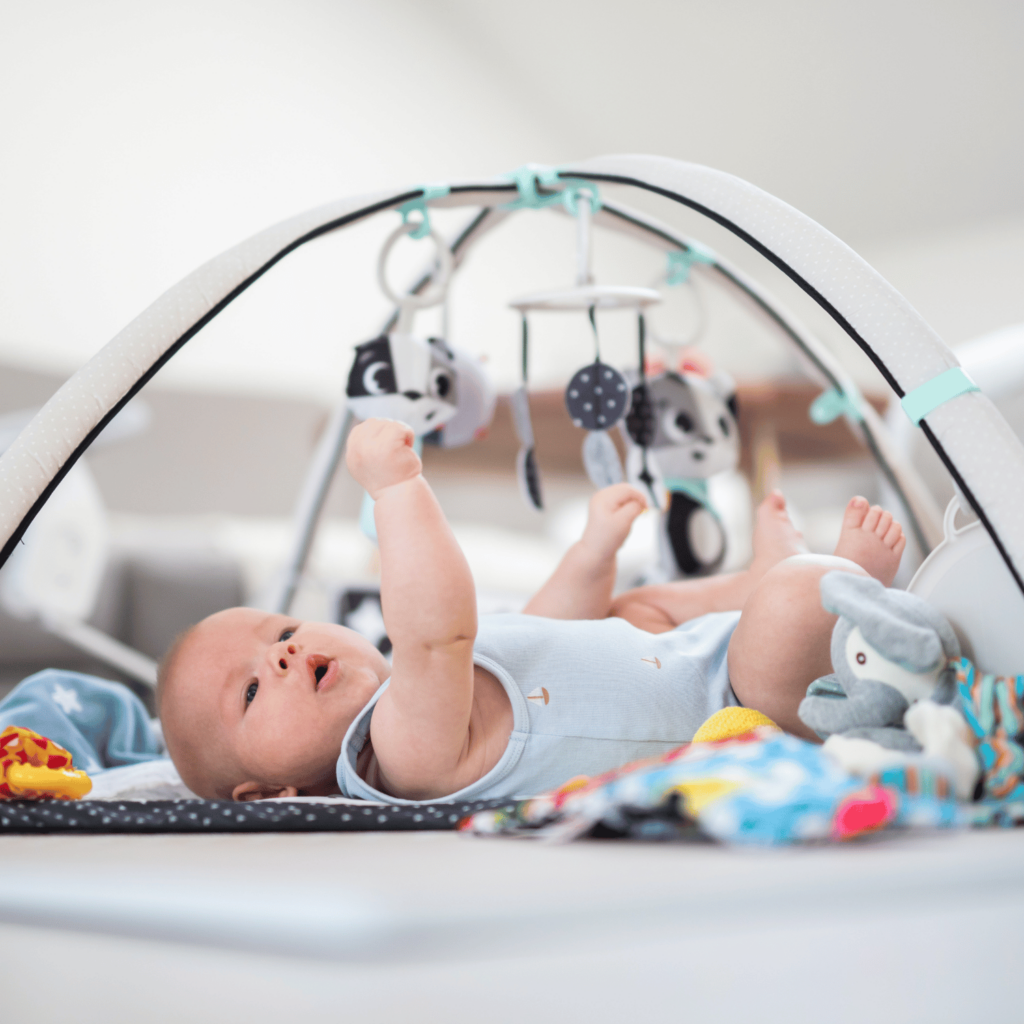Welcoming an adorable human into your life brings about some huge changes. Along with the sleepless nights and endless diaper changes comes the realization that babies can also bring some hefty expenses.
If you’re trying to make a sound financial plan as a first-time parent you might be wondering: how much does it cost for a baby’s first year? We’ve pulled together some real-life examples of baby expenses based on current pricing and created for you the ultimate baby budget worksheet.
This post may contain affiliate links which means that I may receive compensation at no extra cost to you if you make a purchase from a link found on my site. Please review my privacy policy for further details. As an Amazon Associate, I earn from qualifying purchases. Thank you for your support in allowing this site to continue!
How Do You Budget When Expecting a Baby?

Budgeting for a baby will vary based on the priorities you have for your family and your baby. Let’s peel back the layers of the financial onion to see what it really costs to bring a baby into the world. Brace yourselves, future parents – from prenatal care to those endless packs of diapers, parenthood comes with a price tag.
But hang on to your pearls, because with knowledge, you can navigate these financial waters just like so many parents who’ve come before you. So, grab your calculator, and let’s dive in.
For each section, we’ve broken down the cost of low range vs high range options you might consider on your parenting journey. Remember, each family has its own unique set of needs which is why it’s so important to create your own budget using the template provided.
Feeding Expenses for Baby
The price of feeding your baby for the first year is going to depend heavily on some individual factors. Are you going to breastfeed or use formula? Those come with their own expenses, a mother who is breastfeeding may need a manual or electric breast pump, but she may not need to buy as many bottles or purchase any formula. If you buy a breast pump, is it a single manual pump or a double electric pump? Insurance typically covers the cost of a breast pump so make sure you review your benefits to offset that big expense.
Some of these questions you might not be able to answer until your baby arrives and you see how things are going. For your budget, choose what you think you’re most likely to go ahead with and be prepared to make changes as you go.
Here are some feeding essentials to consider:
- Formula for one year
- 8 Baby bottles
- 5 Bibs
- 6 Burp cloths
- 6 Boxes of infant cereal
- 120 Jars of baby food
- 3 Feeding dishes
- 4 Rubber tipped baby spoons
- High chair
- Breast pump
- Breastfeeding supplies
- Nipple cream
- Nipple shields
- Nursing bras
- Nursing pads
- Milk storage bags
- Nursing pillow
Bathing Essentials for Baby

Decisions await you when shopping for a new baby! Electric nail clippers vs standard mini clippers, hooded bath towels vs using towels you already have at home. There are lots of little choices to make surrounding bath time with your baby. Use these ideas to help price out the cost of your baby bath expenses.
- Baby bathtub
- Baby wash
- Baby nail clippers
- Baby lotion
- Diaper rash cream
- 3 Washcloths
- 2 Hooded cloth towels
- Bath toys
Sleeping Must Haves for Baby
Consider whether you’d like to use a pack-and-play style bed, bedside bassinet, or standard crib (or even a combination of all of those depending each baby stage).
Every type of baby bed comes in a wide variety of pricing too! Depending on your style and how much use you’d like to get out of your baby bed, you may want to opt for a slightly more expensive bed with a high quality to last (especially if you plan to have additional children).
Blankets are not recommended for babies, so you’ll want to factor in some swaddles and sleep sacks on your baby budget worksheet to keep baby warm when resting.
- Crib
- Crib Mattress
- 2 Waterproof mattress covers
- 3 Sets of sheets
- Bassinet or cradle
- Pack n Play
- Swaddles
- Sleep sacks
- Sound Machine/Soft Lighting
For additional budget-friendly ideas for your baby’s room, hop on over and read, 25+ Sought-After Baby Room Ideas on a Budget.
Medical Care Expenses for Baby
Hopefully, you won’t spend too much unplanned time in your pediatrician’s office during your baby’s first year based on sickness, but did you know that most offices have a set schedule for ‘well check’ visits? These visits include dedicated times to weigh and measure your baby to make sure his or her growth is on track.
Well check visits also sometimes include routine vaccinations and other standard care practices. Insurance typically covers these expenses but it’s important to check with your provider for any out of pocket expenses that you’ll need to budget for in the first year.
- Pediatrician visits co-pays
- Basic first aid kit
- Thermometer
Diapering Costs for Baby

Diapers and wipes are where you’ll really start feeling like you’re throwing your money away as a new parent. Each diaper can cost anywhere between $0.20 and $0.40 and a newborn baby needs a diaper change about every 2 hours for the first couple months. Cha-ching!
Once your baby starts solids, they tend to need fewer diaper changes throughout the day, but the cost of the diaper packages can start to creep up. We’ve done our best to estimate that the cost of your baby’s first year of disposable diapers could be anywhere from $400 – $1200.
- Diapers
- Wipes
- Diaper pail
- Diaper bag
- Changing table
- Changing pad
- Changing pad liner
- Changing pad cover
Baby Clothing Costs
Does it snow where you live? Is it always sunny? Your baby’s clothing budget will depend on the temperature and how important style is to you.
There’s also the matter of personal preference when it comes to dressing your baby daily. So many parents use zippered pajamas all day every day for the first couple of months because they are easy to use and get frequently soiled.
If you prefer to dress your baby in a shirt, pants, and socks every day, then it’s realistic to assume you’ll need a set of clothes in each of these 5 sizes: newborn, 0-3 months, 3-6 months, 6-9 months, 9-12 months.
- Scratch mittens
- 40 Shirts/tops (variety of sizes as baby grows)
- 40 Pants/bottoms (variety of sizes as baby grows)
- 12 Pairs of socks (variety of sizes as baby grows)
- 4 Pairs of booties
- 10 Pairs of pajamas (different sizes as baby grows)
- 1 Pair of walking shoes
- 1 Snowsuit with mittens
- 1 Winter hat
- 1 Summer hat
- Specialty outfits for seasons and occasions
Safety Expenses for Baby’s First Year
If your home has stairs, you’ll need a baby gate at the top to prevent falling down, and another at the bottom to prevent climbing up and then falling. You may need additional gates in other parts of your home, but two is a good place to start. The price of your monitor will depend on whether it has video capabilities or not as well as the other bells and whistles they often have.
- Baby monitor
- 2 Safety gates
- Safety outlet covers
- Cabinet/drawer latches
- Toilet seat latches
- Car seat
Extras for Baby

Does your baby NEED a swing or an exersaucer? No, but it might save your sanity depending on their disposition. Some babies are totally fine being set on the ground and others seem to cry endlessly. These ‘extra’ items are not necessarily essentials, but you’ll find them in the homes of most babies!
- Baby swing
- Bouncer seat
- Rocking chair
- Exersaucer
- Playpen
- Gym or play mat
- Teethers
- Toys & books
- Stroller
Baby Budget Worksheet Additional Considerations
Will your family have a maternity leave or are you expecting to have childcare costs within your baby’s first year? Do you have health insurance to help cover the cost of birth? Look into the estimated expenses for the type of birth you’re hoping for (birthing center, hospital etc) and add it to your worksheet.
Many parents also decide it’s a good time to get life insurance to protect their family in the event of injury or death.
- Child care
- Medical bills (cost of birth)
- Life insurance
- Will creation/lawyer fee
Free Baby Budget Worksheet
How to Budget for a New Baby

Now that you have your handy-dandy baby budget worksheet, how can you make it your reality? Here’s how to create a baby budget worksheet:
1. Set clear financial goals and priorities
First things first, grab a notebook or open your favorite budgeting app. Sit down with your partner and start by dreaming big! What do you want for your family financially? A house? College fund? World travel? Write it all down.
Now, prioritize those dreams. What’s a “must-have” and what’s a “nice-to-have”? This will give you a roadmap for your budget.
2. Assess your current financial situation
Time for a little financial check-up. Take a deep breath; it won’t hurt too much. List your income sources and expenses. Don’t forget Netflix, because, let’s be real, that’s non-negotiable.
Got debts? Make a note of those too. Student loans, credit cards, and anything else you’ve got up your sleeve.
3. Create a comprehensive baby budget plan
Fixed expenses are the things that don’t change, like your rent or mortgage. Variable expenses, well, those are the ones that keep you guessing — groceries, gas, and yes, diapers.
Now, add those baby-specific expenses. Diapers, baby food, onesies that your baby will outgrow in a blink, and all the cute, unnecessary stuff that you can’t resist buying.
Life is unpredictable, especially with a tiny human in the mix. Build an emergency fund. Aim for at least three months’ worth of expenses. Your future self will thank you when you’re not panicking over unexpected expenses.
Add your fixed and estimated variable expenses to your budget as well as an amount that will help you build an emergency fund.
Smart Spending on Baby Essentials
In the baby aisles, everything looks essential and oh-so-adorable! But wait – before you go on a shopping spree, take a deep breath and prioritize. What does your baby really need?
Make a list of must-haves like a safe crib, car seat, and diapers. Then, treat yourself to a few “nice-to-haves” like that ridiculously cute baby onesie with animal ears. But remember, Baby won’t notice if they’re dressed as a bunny or a plain old baby. It’s ok to have a couple of precious outfits, but you don’t have to go overboard.
Baby gear can break the bank if you’re not careful. So, let’s outsmart the system!
Join the Hot Deals from Everyday Thrifty online deals group where baby-related deals are posted often!
Check out thrift stores, consignment shops, and online marketplaces for gently used baby gear. Just make sure items meet safety standards and haven’t been recalled. You’d be amazed at how much money you can save by going the pre-loved route.
Sticking to Your Baby Budget

So now that you’ve done the hard work creating your baby budget worksheet, how do you stick to the plan? Here are some tips to keep you on the right track.
Track expenses and adjust the budget as needed
Think of tracking expenses like playing detective with your finances. Keep those receipts, check your bank statements, and use budgeting apps.
Life happens, and budgets need to evolve. Maybe Baby needs a few extra baby wipes or, let’s be honest, you need a sanity-saving latte. Adjust your budget as life unfolds but keep track so it doesn’t get out of hand.
Strategies for staying disciplined
Making an impulse purchase in the baby aisle is tough to resist. Here are a few tricks:
Embrace the 24-hour rule. If you want to buy something non-essential, wait a day. See if you still want it tomorrow.
Use cash or a debit card instead of credit cards. It’s harder to overspend when you see the money leaving your wallet.
Reward yourself for sticking to your budget. It could be a small treat, like a movie night at home when you hit a savings milestone.
Seek support from friends and family
Do you have family or close friends with kids of similar ages? They might have some great advice or even some hand-me-down baby gear to help you save.
Consider organizing a baby gear swap with fellow parents. Babies grow like weeds, and sharing gently used items can save you a bundle.
The other good news is that new parents often have a baby shower that can pick up the cost of many of your baby products. Get set up with a good baby registry and your first child might be gifted all kinds of clothes, baby items, and gift cards to help make your life a little easier.

Final Thoughts
I hope this baby budget worksheet helps you navigate the wild world of parenthood without breaking the bank. Sure, babies can be tiny, but their expenses can add up faster than they learn to crawl.
The actual cost of raising your new bundle of joy is going to depend on so many factors that are different from person to person. The easiest way to get an accurate idea of how much you need for your baby budget is to fill out the spreadsheet with your own major expenses and anticipated baby costs. Using this baby budget worksheet, you’ll have a better idea of how a new addition will affect your bottom line.
Remember, budgeting doesn’t mean you can’t spoil your little one – it’s simply about doing it wisely. So, keep your baby budget in check and enjoy every moment with your bundle of joy! And, if you’re looking for more ways to save money on your new baby, check out 36 Guaranteed Ways to Save Money on Baby!





Leave a Reply